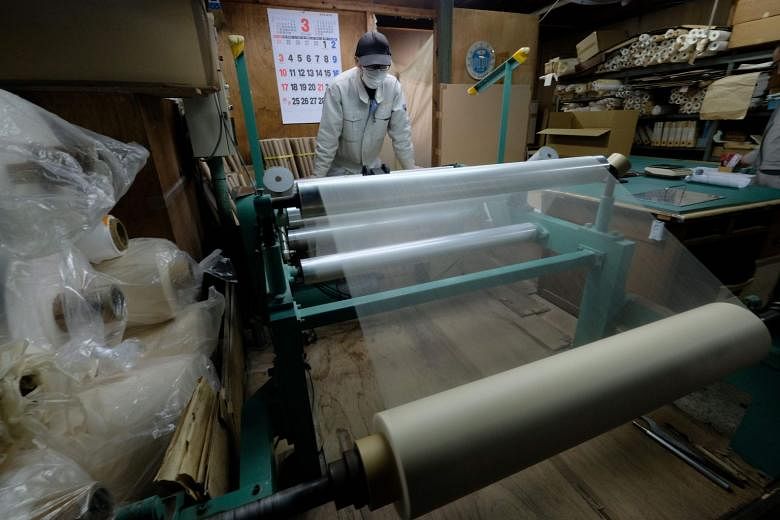HIDAKA (Japan) • Once an indispensable part of daily life in Japan, ultra-thin washi paper was used for everything from writing and painting to lampshades, umbrellas and sliding doors, but demand has plunged as lifestyles have become more Westernised.
Despite its 1,300-year history and Unesco Intangible Cultural Heritage status, washi paper is struggling to attract consumers and the market value has dropped by more than 50 per cent in the past two decades.
But at a small workshop in western Japan, Mr Hiroyoshi Chinzei, a fourth-generation traditional paper maker, creates washi with a unique purpose that may help revive interest - both at home and abroad.
His product, the world's thinnest paper, has helped save historical documents at major museums and libraries - including the Louvre in Paris, the British Museum and Washington's Library of Congress - from decay.
"Washi paper is more flexible and durable" than what Japanese refer to as "Western paper", which disintegrates into tiny pieces when it becomes very old, the 50-year-old said.
The traditional handmade paper is manufactured from plants called kozo, or mulberry, which has fibres that are much longer than materials used for paper in the West, such as wood and cotton.
"Old Japanese books from the seventh or eighth century remain in good condition... thanks to the fibres of the kozo plants," the washi-maker said at his small factory in Hidaka, a village 640km south-west of Tokyo.
The paper-making process begins with steaming the kozo plants and peeling off the bark, which is then boiled until soft, while impurities are removed by hand in clear water. The fibres are then beaten and mixed with glue and water, before being placed on a wooden screen.
The screen is then dipped repeatedly in water with the fibres and shaken to spread the liquid evenly to make a sheet of paper, a technique that requires years to master.
Because washi is hard to break, damaged, old documents can be reinforced by attaching a piece of washi or sandwiching them between two sheets of the paper, Mr Chinzei explained.
For documents, transparency is key to be able to see the text, meaning the thinner the washi, the better.
Mr Chinzei's washi, a type called tengu-joshi paper - also known as "the wings of a mayfly" - is 0.02mm thick and weighs 1.6g per square metre.
This compared with a standard sheet of photocopy paper, which is about 0.09mm thick and weighs 70g per square metre.
"It's a mesh-like paper mainly made with fibres... It's as thin as human skin," Mr Chinzei said.
Using both machines and hand-made techniques passed down for generations, the firm can create ultra-thin paper, which is also used by conservationists to restore and protect cultural objects.
The production of the Japanese paper peaked in the Edo period between the 17th and late 19th centuries, but declined as papermaking was mechanised.
Now, due to the Westernisation of Japan, the washi market is shrinking again, Mr Chinzei said.
"We have no tatami rooms and almost no space to display a hanging scroll in the current lifestyle," he said. "Washi used for those things are now gone."
According to the industry ministry, the total value of handmade washi dropped to 1.78 billion yen in 2016, from 4.15 billion yen in 1998, while that of washi for calligraphy and shoji sliding screens fell to 5.86 billion yen from 25.1 billion yen.
The volume of washi used for restoration is still small, but it has been shipped to more than 40 countries and Mr Chinzei is hopeful interest will grow.
He explained: "For restoring cultural assets and as a canvas for art... I think washi has the potential to be used more in the world of art."
AGENCE FRANCE-PRESSE

